Inside the Urgent Race to Meet Rising Demand for Later-Pregnancy Abortion
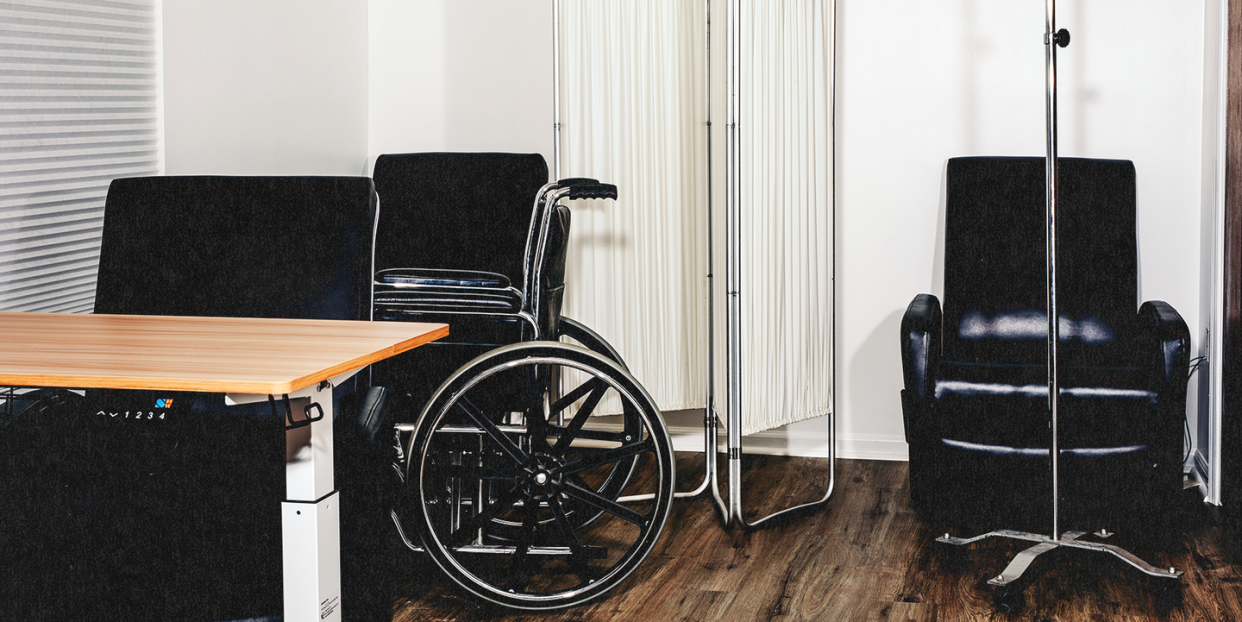
At any other kind of clinic, the man in the baseball cap wouldn’t warrant attention. He’s just leaning against his bike, smoking a cigarette in the courtyard. But to Morgan Nuzzo, his presence is ominous. It’s 94 degrees this Tuesday afternoon in College Park, Maryland, and the man wears all black. Minutes tick by. He doesn’t make a move toward any of the businesses in the building.
Nuzzo—a certified nurse-midwife who gives off don’t-mess-with-me vibes—cuts a path through mountains of Amazon boxes, bubble wrap, and construction supplies in the soon-to-be lobby of Partners in Abortion Care (PAC), where she’s joined by her cofounder, ob-gyn Diane Horvath, MD. The women were colleagues in the past but now they’re comrades, navigating the newly perilous terrain of abortion care in later pregnancy—the front line of preventing forced births in America. Nuzzo pulls down the blinds on the shatterproof windows. The reinforced steel door is already closed. “Welcome to the scariest part of being an abortion provider,” she says.
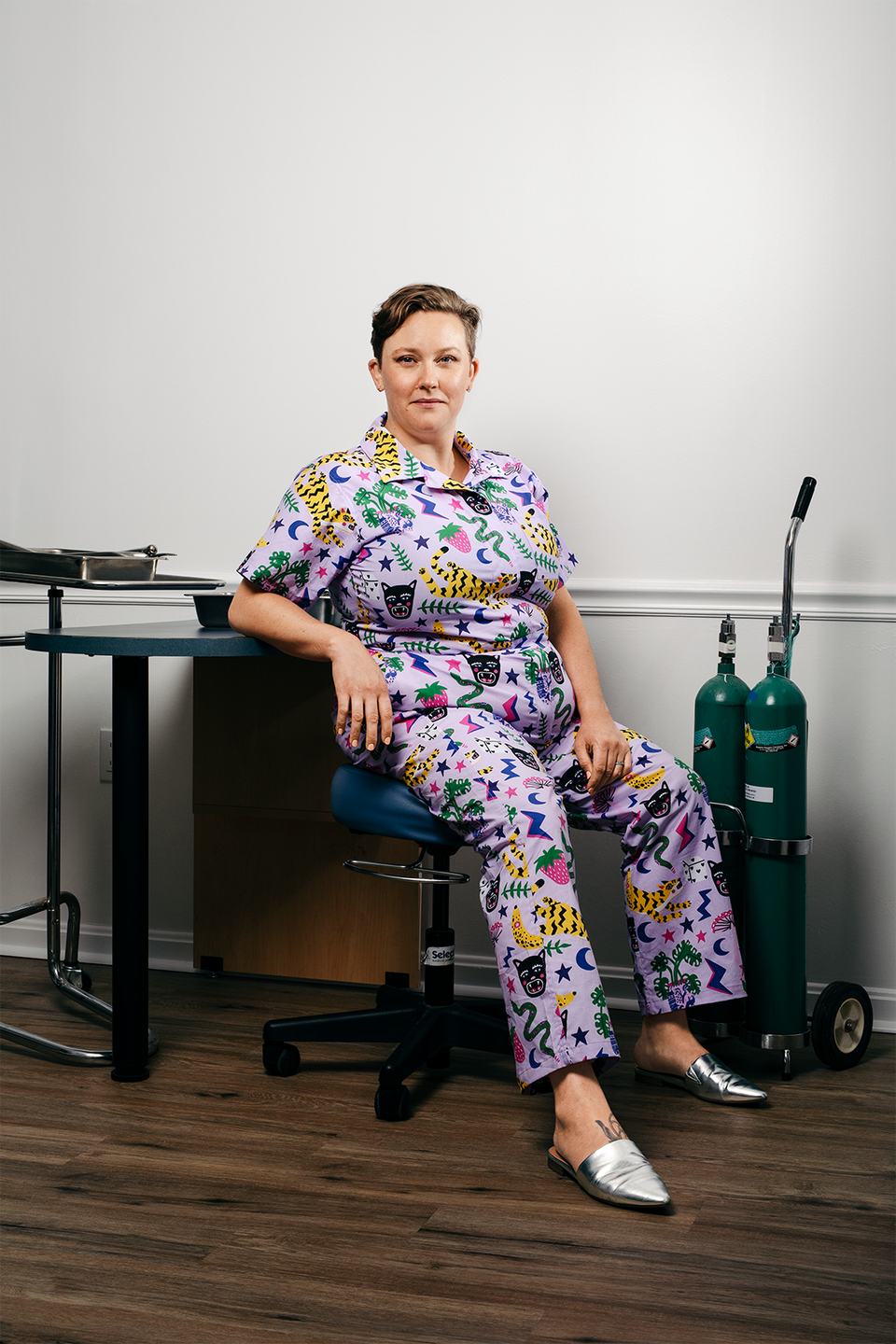
Dr. Horvath, 43, and Nuzzo, 35, have been through this drill before. Sometimes the strangers outside are harmless. Other times, they’re carrying weapons with intent to cause harm. In 2021, clinics across the country saw sharp increases in violence and disruption from anti-abortion extremists: bullets flying at buildings, physical assaults on providers, property vandalism. Before this clinic can open, Dr. Horvath and Nuzzo will need to install panic buttons—one more item on a complex to-do list they’re sprinting to complete. Every week they’re not scheduling patients, more pregnant people are left with nowhere to turn.

The staff goes back to their tasks, outlined on a whiteboard in the office and overflowing onto other surfaces in a wild rainbow of Post-it notes. Nuzzo Zooms with a payment-processing platform company—complicated because the money for a single procedure might come from multiple sources: the patient’s own pocket and a patchwork of abortion fund donations. (PAC does not accept insurance, and insurance coverage for abortion is broadly lacking in the U.S.) “I’ve seen 12 different funds contribute,” says Lucy Font, PAC’s manager of patient coordination and advocacy. Tucked in a windowless back office, she reaches out to a local funeral home to inquire about the cost of picking up and preparing fetal remains for burial ($1,000). Ariel (her last name has been omitted at her request), an abortion doula hired as a patient-care technician, continues to unpack and set up the space. Squinting between two computer monitors, Dr. Horvath scrolls through clinic inspection paperwork, one hand propped up on a floral wrist rest.
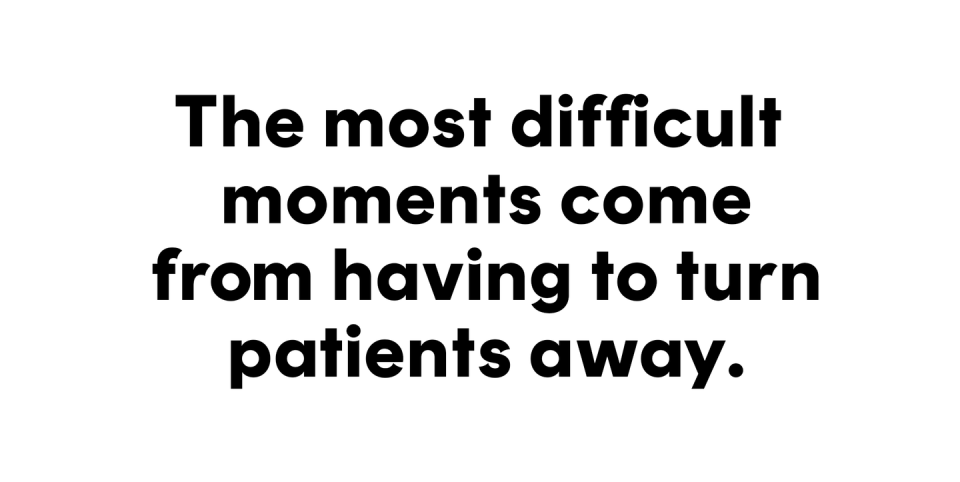
Throughout that hot August week, everyone ticks through their tasks. Together, they greet their contractor—swinging by to repair a wonky doorknob—and coo over photos of his new baby. They plan to meet people in the surrounding business community so they can better distinguish familiar faces from unusual outliers.
“We’re already thinking about where protesters are going to post up,” says Ariel. She’s mentally tallying nearby storefronts available for lease too because a tactic among anti-abortion groups is to snap up spaces near clinics and use them as bases for patient harassment and protests. They also install “crisis pregnancy centers,” aka fake clinics that seek to dissuade pregnant people from getting actual care. On Wednesday, everyone at PAC takes note when the man in the baseball cap reappears.


In our current reproductive rights hellscape, it’s mainstream knowledge that access to abortion is under siege. But for people seeking pregnancy termination in the latest possible window of 24 to 39 weeks—less than 1 percent of all abortions as of 2019, fewer than 5,000 per year—the situation is especially dire.
Since June, when Roe v. Wade was overruled, waiting lists for abortions later in pregnancy have swelled even as physicians have doubled, sometimes tripled, their patient loads. Many of those patients fall into distinct categories: children and adolescents, people who didn’t know they were pregnant, and those whose devastating fetal anomalies are not discovered until the late-second and third trimesters.
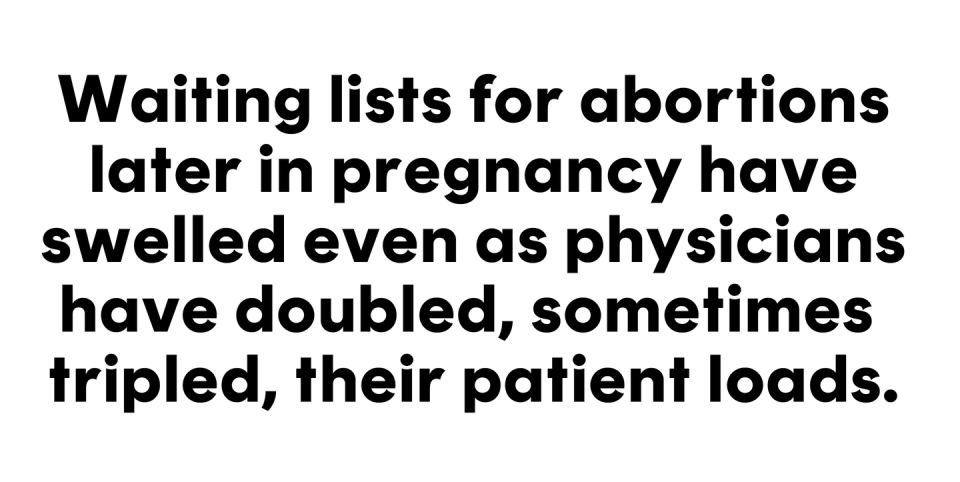
The need for later-pregnancy abortion will likely continue to grow as new early-abortion bans and restrictions add more patients to the queue, says Katrina Kimport, PhD, a medical sociologist at the Bixby Center for Global Reproductive Health at the University of California, San Francisco. That includes people who would have terminated their pregnancies much sooner with medication or a simple vacuum aspiration procedure—at far lower cost and with fewer medical risks—if legal barriers hadn’t created weeks of logistical delays. Also lining up: patients with conditions like severe preeclampsia that would have allowed them to receive “special exception” abortion care in hospitals before Roe’s undoing. The narrower the health care bottleneck, the more backed up it becomes.

Later procedures can cost up to $30,000 and, for most people, necessitate travel—currently only a handful of clinics provide care beyond the 28th week: Southwestern Women’s Options in New Mexico; Boulder Abortion Clinic in Colorado; DuPont Clinic in Washington, D.C.; Washington Surgi-Clinic in Washington, D.C.; and CARE Clinic in Bethesda, Maryland. PAC is ready to become another refuge in Maryland, where lawmakers have stepped in to expand abortion access by including a larger pool of providers.
One of the many pervasive myths of later-abortion care is that too few qualified clinicians are willing to do the job, as though the field is so specialized that only rarely does someone come along to take up the challenge. In reality, most abortions in later pregnancy are fairly straightforward. The process typically takes place over several days: The clinician first administers an injection to stop the fetal heart, then gradually softens and dilates the patient’s cervix. On the day of the procedure, the patient receives medication to induce contractions—along with medication for pain and anxiety as needed—and then expels the fetus. Patients can usually go home after a few hours in recovery.

Dr. Horvath, clad in a navy blazer with a smartwatch on her wrist, is emphatic: “There are people who want to do this work.” They just need more facilities to work in. The most difficult moments come from having to turn patients away, adds Nuzzo. “That’s the worst thing we have to do.”
PAC’s mission is to create a “soft landing” for patients who are often facing the most desperate circumstances of their lives, with their entire futures at stake. Dr. Horvath will never forget a preteen patient who, after finally undergoing an abortion, was just excited to go back to middle school and be a kid again.

Last December, when the Supreme Court started hearing arguments in the case that would overturn Roe, Dr. Horvath and Nuzzo decided to embark on their own practice. The community around them quickly rallied to help put their plan into action.
A grant from the Tara Health Foundation gave them the financial runway to get started, and Nuzzo’s book club raised $25,000. But it’s the support from micro-donations that Nuzzo marvels about. Two hundred dollars here, a couple thousand over the course of a weekend—as of the second week of August, the GoFundMe for PAC had garnered $365,545 from almost 3,000 donors, numbers that were continuing to climb. “This is my sole source of dopamine,” she says.

Visit PAC’s Linktree page and you’ll find an Amazon Wish List—a small but essential roundup of items the clinic still hopes to stock: medical supplies like masks and blood-type tests, cleaning necessities like mop pads and germicidal wipes. They’re sourcing snacks to provide to patients after procedures and black leggings for those who need something to wear while they’re recovering. PAC is also looking to bring potted plants into the space, drawing on evidence that greenery in clinical settings can help reduce patient anxiety and stress.
“Some of the places I’ve worked felt like mini hospitals, where everything was very clinical, very sparse. The lighting was all fluorescent,” says Dr. Horvath. Here, PAC has incorporated table lamps in pretty colors, like rose gold and teal; translucent images of galaxies and fluffy clouds decorate the ceiling lights of their procedure rooms, giving patients a pleasant focal point while lying back. For those in recovery, they plan to provide cozy fleece blankets. Dr. Horvath shows off a blue buttery-leather procedure chair, sourced secondhand from a medical spa clinic, along with several mechanically operated procedure chairs designed to accommodate larger patients comfortably and ease strain on care providers.
The days can be long and exhausting, both physically and mentally. Recalling the times they’ve been burned out, demoralized, and devalued, the PAC founders also intend to create a better environment for employees, including regular anti-oppression training, low-deductible insurance, and a livable wage.

“It’s hard work for a lot of reasons,” Dr. Horvath acknowledges. “You are in this not just because you need a job, not just because you want to punch a clock and get a paycheck.” You’re not in it to get rich either: Salaries for full-time abortion physicians vary but tend to start in the low six figures and are usually below what a general ob-gyn would make in a hospital. This is considering that the average amount of debt for a medical school graduate is $203,062, with more potentially piling on during a fellowship and residency. “You have to feel the need to do this in your bones,” Dr. Horvath says, especially now that some states are weighing felony penalties for aiding and abetting abortion, with possible bans on travel to states where it is legal. Dr. Horvath and Nuzzo believe they’ll need a criminal defense team at the ready—another expense.

Shortly after Cosmopolitan’s visit, PAC weathered a series of blows that only increased the urgency of its opening. First came word that one of the clinicians at the Boulder Abortion Clinic was leaving, effective immediately, setting off shock waves through the field. Even with a pool of providers willing and able to step in and fill the role, onboarding clinical staff takes time—time that someone who is 32 weeks pregnant can’t afford. (Boulder’s director, Warren M. Hern, MD, PhD, told Cosmopolitan he couldn’t comment on internal personnel matters.)
Then PAC’s own timeline hit a snag. Its licensing from the state of Maryland still hadn’t come through nor had an essential piece of its budget. Nuzzo and Dr. Horvath had submitted a membership application to the National Abortion Federation (NAF)—a crucial source of need-based patient funding—over the summer, and now they learned that NAF couldn’t inspect their clinic until November, far later than anticipated, limiting the number of low-income patients they could take on. Without monetary support from NAF, Nuzzo explains, a lot of vulnerable patients won’t be able to make their appointments. So with the November inspection date in mind, she and Dr. Horvath are forced to recalculate their plan. How long can they remain open at partial capacity without jeopardizing the clinic’s internal operations, like keeping the lights on and paying staff?
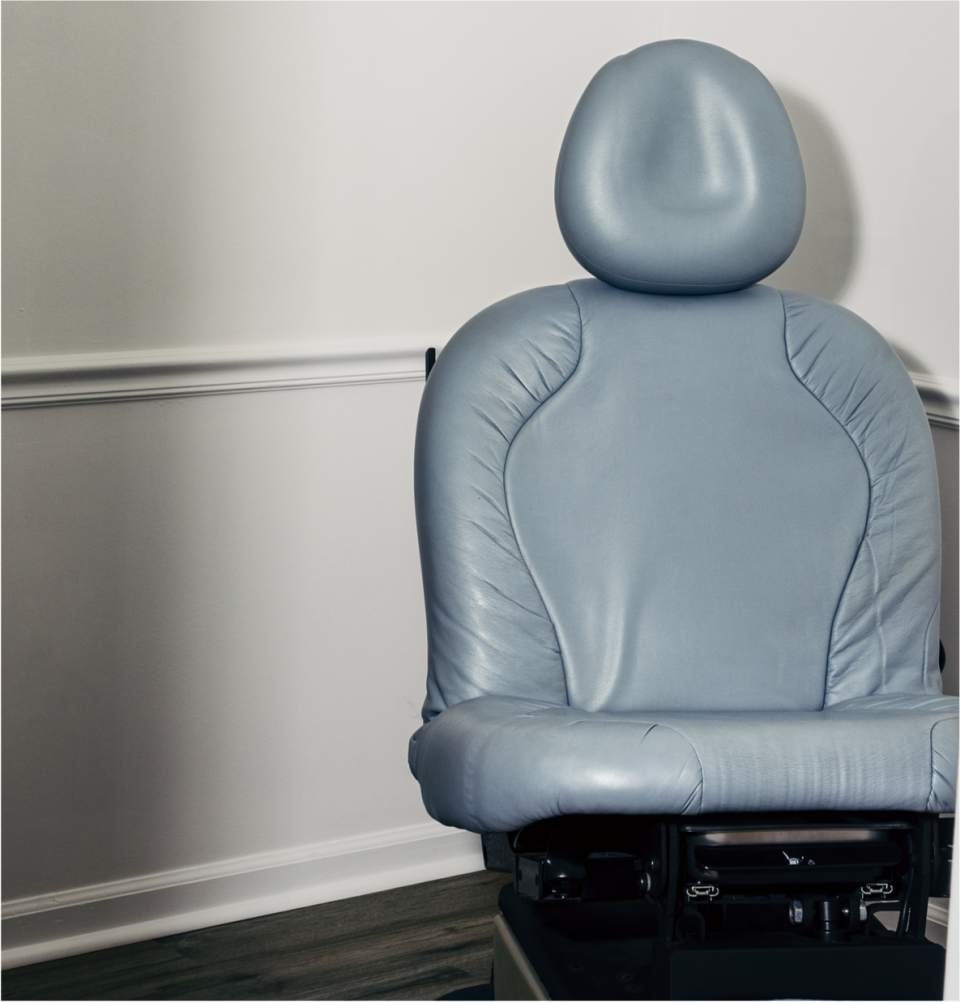
They spent several frantic days calling PAC’s wealthiest donors, emailing supporters, and promoting their GoFundMe again before arriving at a new opening date: October 7. The scramble came at the expense of more meaningful preparations underway, but the money they scraped together will allow them to see patients who can’t afford to pay out of pocket for a month, maybe two, if not much longer.
For now, later-abortion care in the United States will look like this, shaped by the obstacles it must overcome. Clinicians will summon the courage to provide care amid increasingly hostile legal terrain; patients will strive for self-determined futures; the besieged landscape of reproductive rights endures. And for now, the man in the baseball cap stays on the other side of the glass.
You Might Also Like

